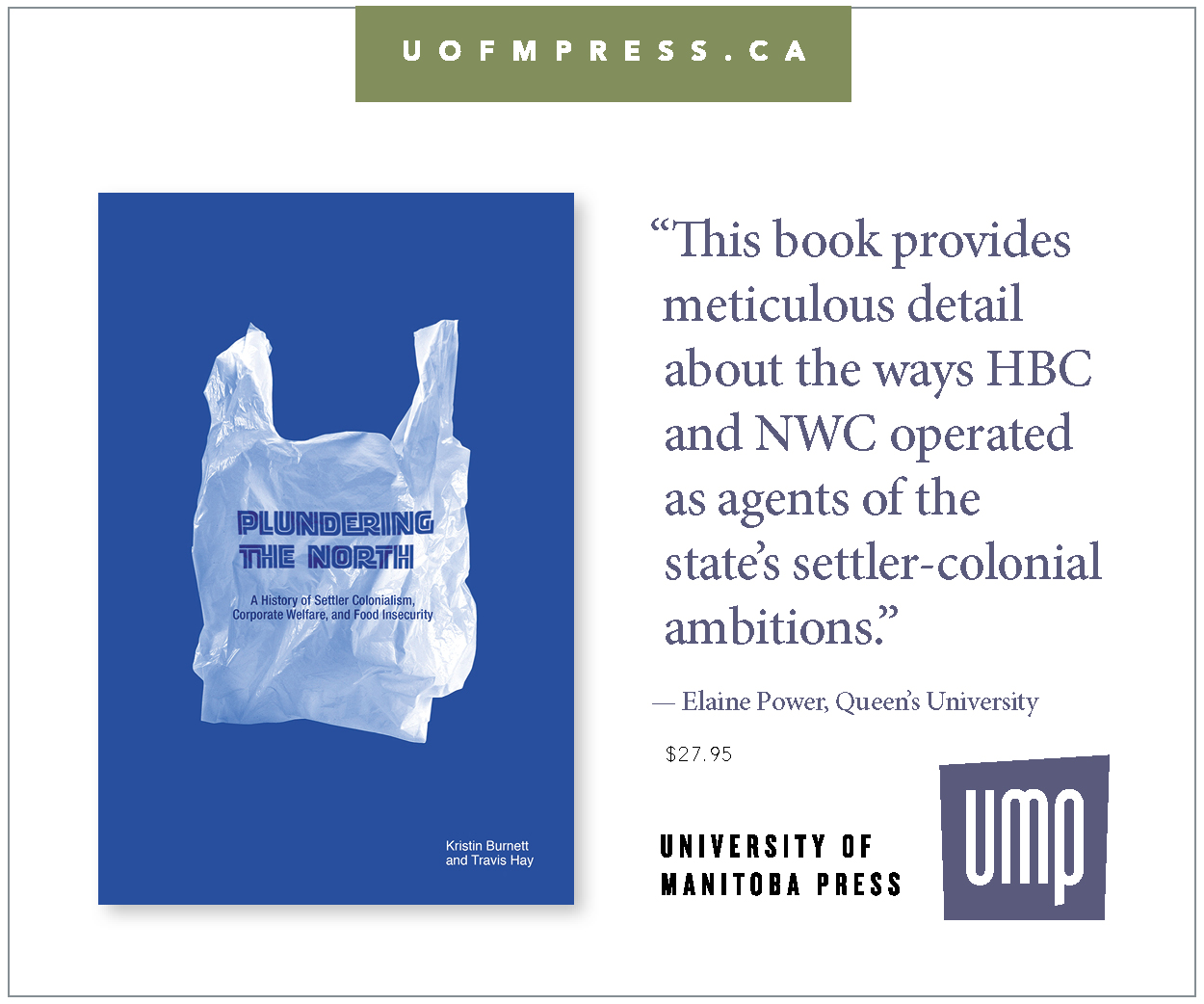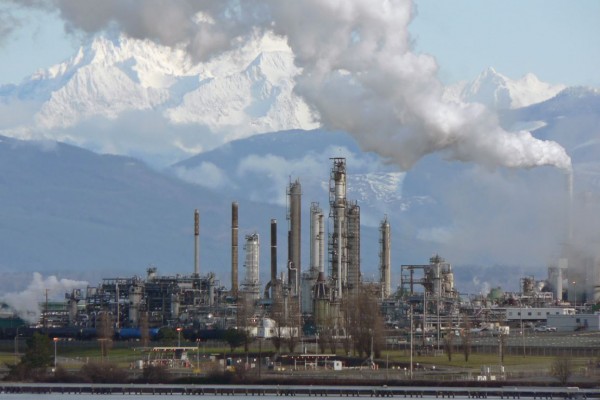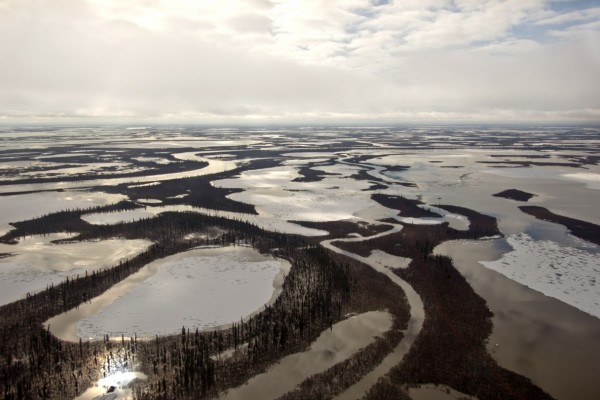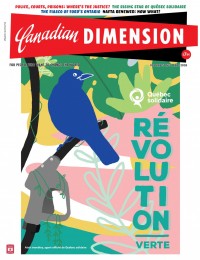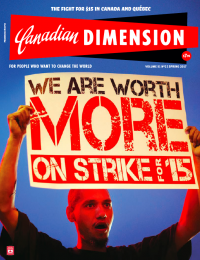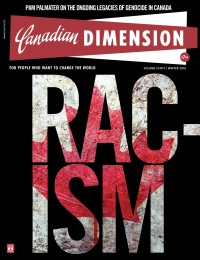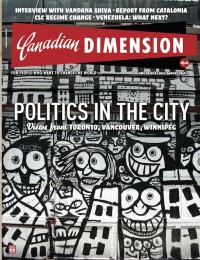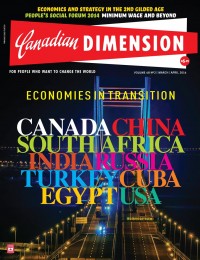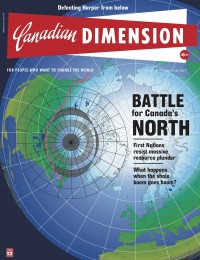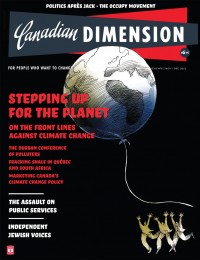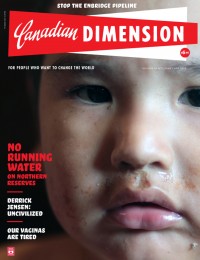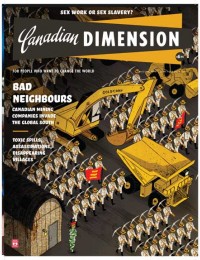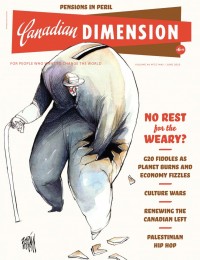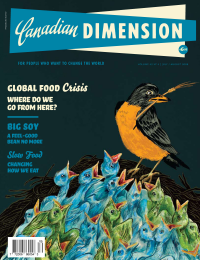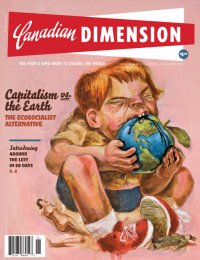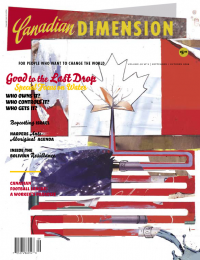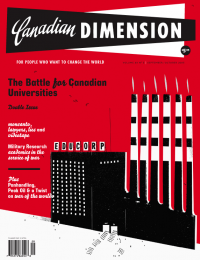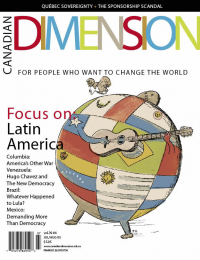Big Soy
The underside of the industry

Soy consumption in North America and Europe is increasing exponentially, these days, for reasons ranging from health consciousness to animal rights to a more mainstream acceptance of tofu. The incredible landmass devoted to soy, however, won’t make the hippies happy. While soy is increasingly promoted as a healthy alternative to animal products in the North, the soy industry is destroying homes, livelihoods, health and the environment across South America. In the context of a global food crisis, in both the North and South large-scale agribusinesses are tightening their grip and local alternatives are espoused as the only saving grace.
The omnipresence of this fuzzy green bean in world markets – and former rainforests – has serious ramifications for food sovereignty across the globe, establishing a new nexus for resource-based conflict between the rich and poor and between industrialized agriculture and small farmers.
Soy production is increasing most rapidly in South America, where one of the most bio-diverse regions of the world is giving way to widespread soy monocultures. Brazil and Argentina are the second- and third-biggest producers of soybeans, with production steadily increasing in Paraguay and Bolivia.
A feel-good bean no more
A discussion of the soy industry, however, is nothing like a face-off between vegetarians and carnivores, and cannot be reduced to simplified binaries. Soy in some form, whether as soy lecithin, soy oil, or isolated soy protein, can be found in even the juiciest, meatiest burgers and the chewiest cookies. Soy is a cheap filler and preservative in processed foods – similar to corn, coconut and other oil palms – which is partly why there has been such a substantial increase in soy production for the food industry.
Still, according to a 2003 report by the Swiss organization World Wide Fund for Nature, only thirteen per cent of soybean production is actually used directly for food. The two main destinations of industrial soy production are livestock feed and agrofuels, neither of which effectively tackles food-security issues in source countries.
On a recent Canadian speaking tour, Soledad Vogliano, a representative from Argentina’s Center of Public Policies for Socialism (CEPASS), said that, while other mainstay agricultural crops have declined significantly in Argentina over the past ten years, soy production has increased by 74 per cent.
“And I have to tell you the reality,” she added. “We don’t use soy for food or for fuel in Argentina – it’s all for export.”
According to “Corporate Actors in the South American Soy Production,” a research paper of the World Wide Fund for Nature, in 2003 South America’s share of the global soybean market was 42 per cent. It is extremely lucrative for the export-oriented soy industry to cultivate soy in regions where labour and land are cheap and judicial systems lax. The major profiteers include a few notorious companies like Monsanto, Cargill and Archer Daniels Midland.
While the global food crisis is a curse for citizens with little disposable income – evident in widespread food riots across developing countries – it is a benediction for certain agri-giants. Cargill’s net earnings of $1.03 billion in the quarter ending February 29 were up 86 per cent from the same period a year ago.
Where are the vast harvests from soy fields being sold? Livestock feed is one key destination for soy meal. Meat consumption is increasing in Asian countries with growing economies, and North Americans continue to fill their bellies with meat (despite a recent spike in numbers provoking much finger-pointing, meat consumption in Asia is still significantly below North America’s).
I caught up with April Howard on a fuzzy phone line at Halifax’s only community radio station, CKDU, to talk soy. Howard, a teacher, translator and writer based in Vermont, was researching and writing in Paraguay last year. “We drove through these amazing plains of just soy [reaching] to every horizon,” Howard said. “There were huge, green, monotonous soy fields, which I might not have thought so much of if the people I was riding in the truck with weren’t saying, ‘Here there used to be a community, here there used to be a community, there was a school there, a town here.’” As more and more land is bought up for soy production, farmers are forced out of their communities.
Brazil, the largest South American country and Paraguay’s neighbour, was ground zero for the South American soy boom. But as Brazil becomes a more expensive place to grow soy – both in terms of land and labour – producers are increasingly encroaching upon Paraguay.
While people across the world grapple with how to provide for increasing energy needs, post-peak-oil, agrofuels are increasingly portrayed as an environmentally sound panacea for global energy shortages. Still, portraying agrofuels as a responsible departure from a petroleum-based society is problematic. Mono-crops replace ancient carbon sinks, and soy production uses enough petroleum-based pesticides to cause death in local passers-by.
Big Soy’s toxic cocktails
According to Javiera Rulli, a biologist who works directly with small-farmer communities in Paraguay, in soy-growing areas babies are being born with birth defects, spontaneous abortions are occurring, miscarriages are commonplace, and numerous people have respiratory issues.
She recounts a story about Silvino Talavera, an eleven-year-old boy who was riding his bike home from the store one day. A giant sprayer machine did a 180-degree turn in a soy field adjacent to the road, engulfing Silvino in clouds of herbicides. Silvino arrived home soaked and sick, prompting a trip to the hospital where examinations showed he suffered from “chemical intoxication.” Two of his siblings were also admitted to the hospital because of the intolerable chemical levels in their bodies.
Silvino convalesced in the hospital for two weeks, but when he returned home the machines were still spraying only about fifteen metres from his house. Small-scale farmers’ homes in Paraguay are generally open-concept and rudimentary, without glass in the windows. According to Rulli, “the chemicals released in this windy climate just cannot be contained.” Silvino couldn’t handle any more exposure to these toxins; he died a few days later.
Glyphosate is one of the most common – and controversial – herbicides used on soy crops, originally patented by Monsanto as “Roundup.” A major concern about glyphosate is that it may disrupt reproductive functions, which is why many birth defects and miscarriages in soy-growing regions are attributed to the chemicals sprayed in the area. Still, Rulli says the biggest problem is that these companies are using “chemical cocktails” on their soybeans that often do not meet even minimum safety standards.
In light of the disastrous impacts the soy industry is having on Paraguay’s rural population and geography, orchestrated resistance has emerged. In 2004, Rulli says, an incredible uprising took place across this land-locked country, creating a national front in defense of “sovereignty and life.” There were widespread protests and over eighty land occupations in response to the soy invasion.
During the uprising, Rulli says, the government had an emergency meeting with the military, the police and the soy and cattle farmers. On their behalf, a concerted effort to squash the social movements resulted in 2,000 detained citizens. They were released shortly afterwards, but conditionally: future political involvement would land them in jail. Subsequently, eighteen military bases were concentrated in areas of acute soy production. Rulli sees this as an institutionalized attempt to demobilize the population. “In this way, they killed much of the mobilization – so many people had their hands tied,” she says.
The challenges of growing local
While Canada may have more rigid regulations and legal recourse than, say, Paraguay, any sufficiently complex analysis of the global food web makes it clear that small farmers in the North are suffering from the ravages of agri-business, too. “The fundamental problem is corporate control of the food chain. As long as we have this model, all of these problems will still be there,” says Vogliano. “We need to start thinking of the transition, because it will not happen in the next hundred years, but in the next 25.”
After Vogliano spoke in Halifax, attendees were eager to talk about alternatives for farmers and consumers. Evident in the responses from both the speakers and audience, the importance of supporting local alternatives for food and fuel is a common basis of unity for those working towards food sovereignty.
Within the global food web, unfortunately, it is not easy to manifest alternatives to intricate systems of profits and pesticides. Anna Anderson, proprietor of Acadiana Soy, a local Nova Scotia business, started making soy products with stovetop and blender in 1994, and would transport them to the farmer’s market in her friend’s pickup truck.
“I’m not a big business person; I like to sell it at the market to people I know,” Anderson tells me. Acadiana Soy’s mission statement is “to increase awareness of the benefits and wide possibilities of soy foods; to be a financially sound and viable business while being environmentally and health conscious through the use of organic materials, no trans fats, recycling, etc; in addition, to uphold employment equity through our employment practices.”
Anderson’s small business is based in Grand Pré, an agricultural town in the Annapolis Valley, not quite an hour from Halifax. Up a driveway lined with elm trees, a rough, red, wooden building is now home to her soy concoctions – complete with kettle steamers, massive sinks and a tractor full of steamy soy meal parked next to the door.
It’s not easy to source ethically grown soybeans, Anderson says. Her first supplier of organic beans was based in Ontario, and they had to be shipped a long way – so she eventually switched to a partnership with an organic grower on Prince Edward Island, only about a four-hour drive (or ferry ride) away. “John came to the market one day and gave us a sample of beans to try, but they were dirty and didn’t yield as much as the ones we were getting from Ontario,” she explains while slicing cakes of California Herb Tofu and placing them in a white bucket of water. “But I liked him, so we worked together to find better varieties and make sure the beans were cleaned better.”
<
h3>Small is still beautiful###
Anderson’s relationships with her suppliers and customers are starkly different from her relationship with the Superstores owned by Canada’s largest food distributor, Loblaw Companies Limited. “Although the world market prices for soy and fuels have increased, if I try to raise the price of my products by five cents, they [Atlantic Superstore] just ignore me. If they would listen to me, we could continue to sell there.”
The dilemma facing Anderson on this crisp spring morning of steamy soybeans is whether to go back to selling only at the farmers markets or to continue selling at the Superstores. She furrows her brow under a white hairnet, and tells me that, after footing transportation costs to ship her products to the Superstores, she sometimes loses money.
Anderson was surprised to know that her legendary smoked tofu sells for $2.29 on Superstore shelves, sixty cents higher than what she sells it to them for. Loblaw’s first-quarter report for 2008 states net earnings of $62 million, but right now Anderson is considering selling only at farmers’ markets because she can’t make a living in big-box stores. She says it’s hard to compete with the big soy producers, who have mechanized equipment and use more and more processed soy for their products, which makes for cheaper production but inferior products of mysterious origin.
The Halifax farmers’ market, a maze of carrots, crafts, cinnamon buns and spring rolls, is easily identified from outside by bicycles locked to staircase railings and lamp posts. In a corner of the market’s basement, Acadiana Soy has three modest tables and two fridges replete with soy nuts, smoked tofu, okara bars, muffins, pate and not-too-greasy vegan donuts.
Small businesses using seductive free samples and friendship as market strategies don’t have it easy, economically speaking. But this type of business model is a step towards the reconfiguration of dominant economic trends, which put profits and pesticides before people and the environment. Speaking on the ravages of soy production, rural migration, urbanization and the global food crisis, Vogliano says, “Until we fundamentally challenge the capitalist system as we know it, these problems will always exist.”
Angela Day is a writer, activist and educator rooted in the East Coast.
This article appeared in the July/August 2008 issue of Canadian Dimension (Food and Hunger).

.png)
